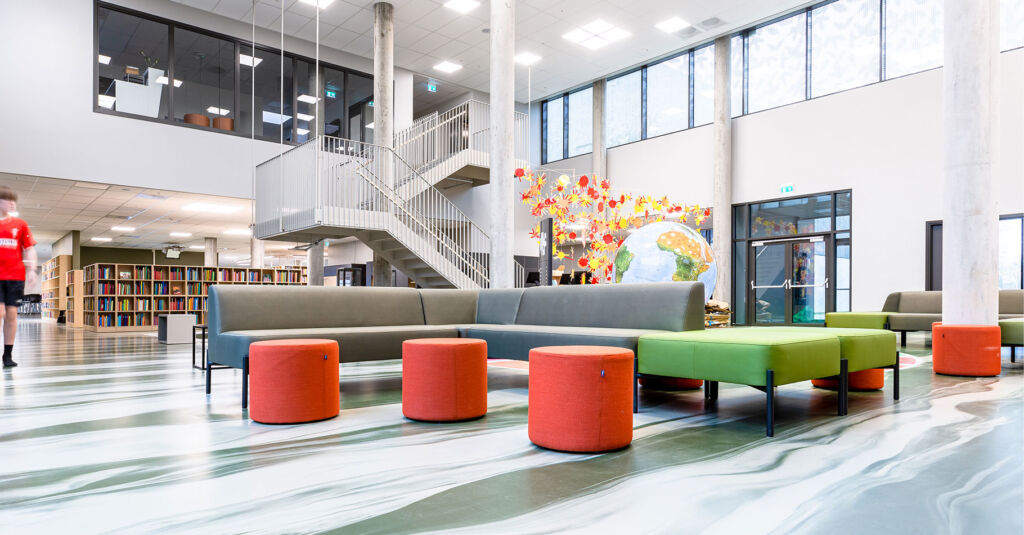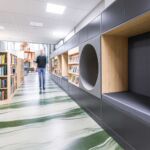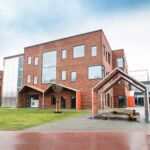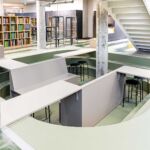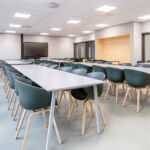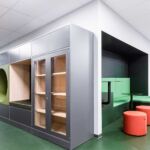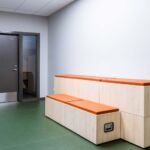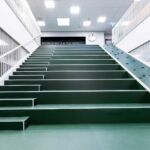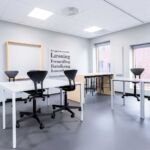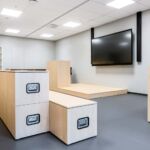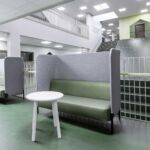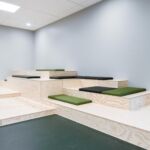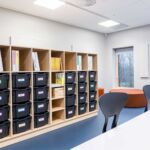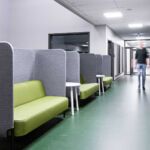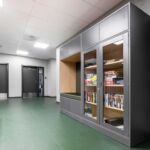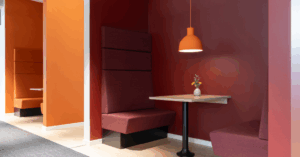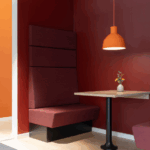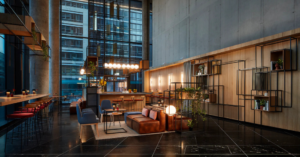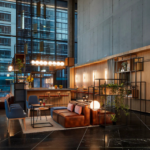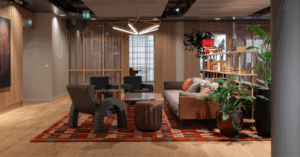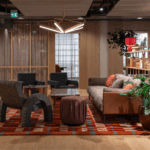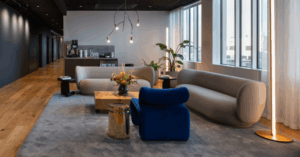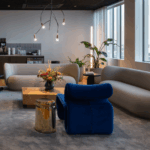The School of the Future has no Homerooms
The bell at Lindbjergskolen, a brand new school situated near the central-Denmark city of Herning, rang for the first time in January 2020. In contrast to the vast majority of schools in Denmark, most of the 950 students at Lindbjergskolen don’t have a homeroom. Instead, they are taught in labs with a strong academic coding designed for each school subject.
Holes in the floor. Three-foot-high climbing walls. Rooms with a lectern and platforms, but no tables or chairs. Assembly rooms with terraced seating. Little huts for group work. Personal lockers. A built-in atrium with room to grow plants.
Lindbjergskolen doesn’t look like an ordinary school. Its interior design is based on new principles in which the classic homeroom concept for 4th–9th graders is replaced with subject-specific labs with clear academic coding and interiors that support the learning activities.
In addition, the school’s remaining square footage is filled with elements designed to activate the spaces – such as holes in the floor for play, reading and group work, and climbing walls that encourage movement and play.
“Subject-specific labs improve the students’ retention”
NERD architects are behind the school’s interior design concept, and we had the pleasure of supplying nearly all of the furnishings for the new school.
But why replace the tried-and-tested homeroom concept with subject-specific labs? And what effect does this have on the students?
Kasper Kjeldgaard Stoltz, didactic designer at NERD architects, says:
“By giving the students subject-specific labs, we can concretize and materialize the otherwise relatively abstract language and culture subjects. This has a particularly positive impact on the students’ ability to retain information, and it makes the subjects more accessible from a sensory perspective, because when the subject stands out through the furnishings, layout and decor, the students are reminded of what the subject is and entails.”
Furthermore, studies show that it takes less time to prepare the students for learning when they move from lab to lab. In other words: less wasted time, more learning time.
Lecterns, workshops and German wunderhits
This didactic approach is particularly evident in the Christian Studies and Social Studies lab, where a lectern and terraced seating create space for the students to learn in a much more context-oriented environment.
In the Natural Science lab, high tables and sinks create an atmosphere that encourages hands-on learning.
And on the walls of the German lab, the lyrics of Nena’s classic pop song “99 Red Balloons” remind students that German is more than grammatical inflections and the “durch-für-gegen” rhyme.
Home Zones
Instead of a dedicated homeroom, each class, from 4th to 9th grade, has a “home zone” where they can gather during recess. There, the students hang out, play games and chat in the popular TWEET lounge series from HOLMRIS B8. The soft furnishings are supplemented by practical storage provided by the flexible KEEP storage system, with shelves, lockers, drawers and padded inserts that give students room for books, games and concentration.
”We chose HOLMRIS B8 as our furniture supplier because they were really good at understanding our needs, wishes and vision for the school. They made some very interesting furniture suggestions which match our new school and we have been very happy about the cooperation.”
Erik Søgaard, Headmaster of Lindbjergskolen, states.
A School Inspired by the Forest
The school’s architecture, interiors and colors are inspired by nature’s own design principles as found in the forest.
Kasper Kjeldgaard Stoltz explains:
”As a physical space, the forest is one of those places that has the most positive effect on people. We can’t move the school out to the forest, but we can bring the forest to the school by incorporating the fundamental design principles of the forest into the architecture. The forest-inspired surfaces, colors, lighting and topographical variations all serve to awaken the senses and keep them alive.”

